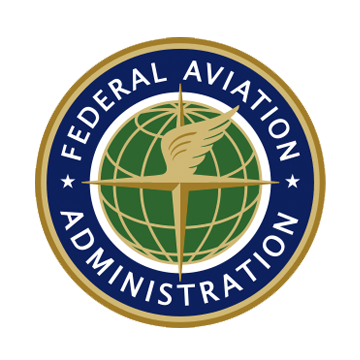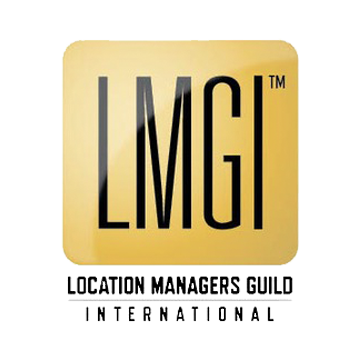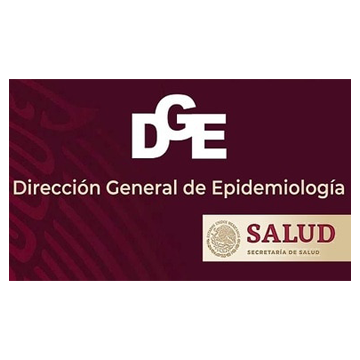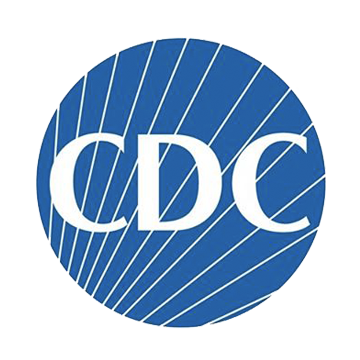This resource highlights new standards for enhanced sanitation and safety of film production settings in Mexico during the current COVID-19 pandemic, with a focus on recommended industry-specific hygiene and disinfection protocols as they pertain to the production workplace.
As this health crisis is an evolving situation across the world, the recommendations for working and filming in Mexico will likewise change over time. For that reason, this set of guidelines will be a dynamic document which reflects “best practices” at the time of publishing.
The most effective way to create CDC-compliant work settings for filming in Mexico is through extensive pre-production planning so that departments are prepared to work sequentially and with generally leaner crews. Operating responsibly with an absolute commitment to set-wide compliance will minimize the risk of COVID-19, though that may mean that the implementation of these precautions will look different from project to project. If you have specific questions in relation to this, please reach out and we’ll do our best to give you an answer.
DISCLAIMER: This information has been collected from various government and industry resources in order to provide an accurate representation of the film production landscape and applicable rules and recommendations as of May 2020. Given the rapidity with which health conditions and guidelines may change, the publisher cannot be held responsible for the accuracy of the information provided below nor guarantee that the production safety details are complete, accurate and current. All information provided is subject to modification, error or omission.
RECOMMENDED GUIDELINES
These guidelines– which apply to cast and crew on and off set — are three-fold:
social distancing, heightened personal hygiene, and comprehensive disinfection measures. Production companies and their employees should adhere to current best practices to minimize the risk of contagion.
Social Distancing Measures
People are to maintain a social distance of six feet (two meters) while working.
For interior shoots, the maximum number of cast and crew recommended at any one time is based on the size of accessible space. Each person should have the ability to distance themselves by 6 feet in all directions.
50 people is currently the recommended maximum number of people allowed on set.
Prioritizing Hygiene
PPE, along with appropriate training for use and disposal, shall be made available to all crew members upon request.
Washing Stations: Hand-washing stations and/or alcohol-based hand sanitizer to be made available at points of entry, common areas, and dining areas.
Masks & Gloves: Masks are advised for all people on set. Additionally, wearing gloves reduces risks of infection; the CDC advises their use when cleaning, picking up food, and interacting with people.
Sanitation Protocols
Frequently disinfection (multiple times per day) is recommended with an emphasis on hard non-porous surfaces including, but not limited to, work stations, door handles, public bathrooms, keyboards, vending machines, dining surfaces, seating areas, stair handrails, and any production equipment touched by more than one person. Any workstation used by more than one person should be cleaned between each use. Shared equipment and tools should be disinfected after each shift. Production will establish sanitation procedures for the disposal of all used cleaning material and PPE.
Minimizing Crew Contact
OSHA guidance regarding COVID-19 workplace protocols recommends that, whenever possible, work should be coordinated in such a way to minimize the number of people given access to a space at any one time. Agency and clients are likewise encouraged to send the fewest possible number of representatives.
Staggered shifts or the use of technology to reduce direct contact between departments and crew is encouraged, where feasible. Example: electrical should not start work until art department has finished and exited the space.
Symptoms and Responses
The most common symptoms of COVID-19 are shortness of breath or difficulty breathing, fever, chills, repeated shaking with chills, muscle pain, headache, sore throat, and new loss of taste or smell. Anyone exhibiting mild or severe symptoms of COVID-19 should be refused entry to set. In the event of a presumptive case of COVID-19 on set, the affected person should be removed from set and quarantined.
Production should inform crew in case a person is discovered to have COVID-19 and inform any persons inside and outside of the production that may have come into contact with said individual.
Cast/Crew Housing & Transpo
Production Housing: Accommodations should be deep-cleaned and sanitized prior to arrivals. Low-contact or contactless check-in to private accommodations is recommended. As per AHLA COVID-19 standards, reduced housekeeping service will minimize unnecessary exposure. Contactless room service options can be provided.
Ground Transportation: Drivers should disinfect their vehicle after every individual transport of crew or cast persons. Passengers shall wear masks and gloves and observe social distancing measures within the vehicle(s).
Staggered Call Times
Call times should be staggered to prevent crowding upon arrival to set, which can be accomplished by creating tiered arrival and departure intervals for each department.
As most production employees are expected to travel to set by private car or crew transportation provided by production, anti-congestion measures should be incorporated into traffic flow patterns as well.
Ventilation
Production should prioritize ventilation of all interior spaces either by means of open windows or mechanical ventilation to minimize the risk of infection due to aerosolized particles.
Signage & Information
Printed signage regarding the risk of spreading COVID-19, preventative measures, and the behavior expected from everyone on set is to be posted in common areas.
PERSONAL RESPONSIBILITY
Safety protocols to minimize the spread of COVID-19 are only effective when each person does their part to consistently practice the following measures:

APPLYING GUIDELINES
Here are the current recommendations for putting CDC-compliant guidelines for work environments into practice on film sets and production settings. While each project will have different locations with unique needs for safety and sanitation, following these procedures will help keep cast and crew safe from load in to wrap.
Testing and Screening
It is advised that cast and crews are tested prior to the start of work, and that sets to be closed to non-production personnel who have not been tested and screened.
Daily thermal or temperature screening is recommended for admission to set.
Production approval for any non-production personnel is advised along with verification of a negative result from SARS-CoV2 (PCR) testing within the previous week before being allowed on set.
Compliant Scene Recommendations
For obvious reasons, crowd scenes where social distancing measures cannot be implemented safely should be considered off limits as the risk of contagion is high. Digital solutions such as compositing layers of persons and crowd duplication are viable alternatives for filming scenes which call for groups of people (e.g., a concert or athletic event, political rally, church congregation, nightclub).
Smaller group scenes– such as a dinner or a team meeting — are preferable.
Interior and exterior scenes with a larger number of people– such as a street scene with background pedestrians or people spaced around an office– are possible as long as social distancing measures can be upheld. Where social distancing measures are difficult to maintain consistently, masks should be provided for working within that filming space.
If physical contact is required, cast should sanitize before and after contact.
Minimizing Cast Exposure
Casting can be done remotely over video conference or using self-recorded video. Anyone with increased risk of severe illness (i.e. elderly, compromised immunity, cardiac or respiratory conditions) should not be cast for any production.
For family scenes, the use of actual family members is advised whenever possible to minimize physical contact outside of the family unit.
While there are no current restrictions regarding on-screen intimacy, cast safety should be the first priority.
Location Considerations
In the event that a scene is being filmed in a small space (under 215 sq feet/20 sq meters), access should be restricted to essential crew only (e.g. director and camera operator).
Production should consider providing remote viewing capabilities for all others.
Filming in public spaces within Mexico is allowed but may require permits.
Hair and Make-Up
Cast members are encouraged to do their own hair and make-up. In the event that hair and make-up artists are needed, these services should be reserved for as few cast members as possible.
Masks are recommended for hair and make-up artists. Both talent and make-up artists should wash or sanitize their hands before and after hair and make-up sessions.
Single-use cosmetic applicators are recommended for make-up artists, including mascara and lipstick. Shared tools and equipment should be disinfected after each use.
Wardrobe
Cast members are encouraged to wear their own personal clothing. In the event that stylists are needed, these services should be reserved for as few cast members as possible.
Before and after styling, both talent and stylists should wash or sanitize their hands.
Dressing rooms where social distancing measures can be upheld are advised.
Craft Service and Catering
Dining: Production is strongly advised against buffet-style food service. The use of pre-packaged foods and ‘grab & go’ items is the preferred method for serving meals, offering single-serving portions and distributed in closed containers or receptacles. Alternatively, catered meals can be ordered earlier in the day and delivered to each individual department. All drinks should be in single serving containers, such as bottles or cans. Individually-wrapped disposable utensils should be offered in order to avoid surface or open-air contamination.
Crafty: Self-service crafty displays may no longer include:
– Self-serve coffee stations
– Unpackaged items and snack bowls
– Fresh fruit and vegetable platters
Seating: Implementation of a staggered crew meal schedule with social distancing measures observed for seating areas or a ‘Continuous Work’ schedule (often referred to as “French Hours”) is advised. Portable chairs (versus bench seating) are recommended.
Kitchen Staff: In addition to observing best practices for food handling, kitchen staff and servers should thoroughly wash their hands beforehand, wear gloves, and observe CDC guidance regarding PPE.
Common Areas
Whenever possible, all common areas and holding for talent should be set up outside. Seating should be arranged to promote distancing. To minimize cross-department exposure, it is strongly advised to designate seating by departments so that at-work groupings are maintained on breaks.
Control Room
Control room should be set up outdoors when possible in order to reduce exposure.
Using technology to reduce in-person contact or utilizing dedicated go-betweens when possible is advised to minimize personal interactions between agency/client and production crew.
EXTRA PRECAUTIONARY MEASURES
To further limit the spread of COVID-19, additional precautions are available to enhance safety measures for the entire production process, both on and off set.
Private Air Charters
Nonstop and direct chartered flights can streamline film production travel and minimize cast and crew exposure by using private FBO terminals for departures and arrivals, which typically means expedited immigration and reduced-contact customs inspections. Pre-screened pilots and ground technicians wearing PPE utilize the aviation industry’s current best practices for sanitation for their fleet of 34 helicopters and 7 late-model jets.
Self Contained Secured Production Sites
Private rental of entire estates, resorts and commercial compounds with sanitation controls managed and enforced by production which exceed current CDC/DGE/WHO guidelines can offer cast and crew a closed set– and an added measure of safety and peace of mind. Property staff can live onsite during production to minimize outside exposure and have masks, gloves, booties or other appropriate PPE provided by production.
Overland Border Crossing for Film Locations within Driving Distance of US
Pre-screened federally licensed local drivers wearing PPE will operate sanitized late-model vehicles for easy overland transportation to production locations in Mexico. Streamlined immigration and reduced-contact customs inspections may be available.
Virtual Scouting
With the assistance of a knowledgeable local scout, production executives can experience a virtual tour of potential film locations in real time from the comfort of their own homes or offices via the video conferencing platform of their choice, including but not limited to Zoom, WhatsApp, FaceTime, etc…
Enhanced Hotel Room Amenities
In addition to the upgraded sanitation measures being implemented as per AHLA guidelines for cast and crew accommodations, complete linen packages (new blankets, sheets, pillows and towels) may be provided for every check-in with updated laundry protocols so that personal linens are washed in individual loads and returned to the same cast or crew member.
STAY INFORMED
Contact Us
Mexico Film & TV Production
This guide was created by The Cabo Agency in collaboration with and based upon information from multiple public agencies and private sector businesses concerned about the safe resumption of film & television production in Mexico during the COVID-19 pandemic. It highlights new emerging standards for enhanced sanitation and safety with a focus on recommended industry-specific hygiene and disinfection protocols as they pertain to travel to, from and within the production workplace.
The Cabo Agency Mexico S de RL de CV
180 Bosque de Ciruelos PP-101
Bosque de Lomas, Miguel Hidalgo, CDMX, CP11700, MXUSA: +1 (310) 499-4180
MEXICO: +52 (554) 166-2724
RESOURCES
Last Updated: January 15, 2021
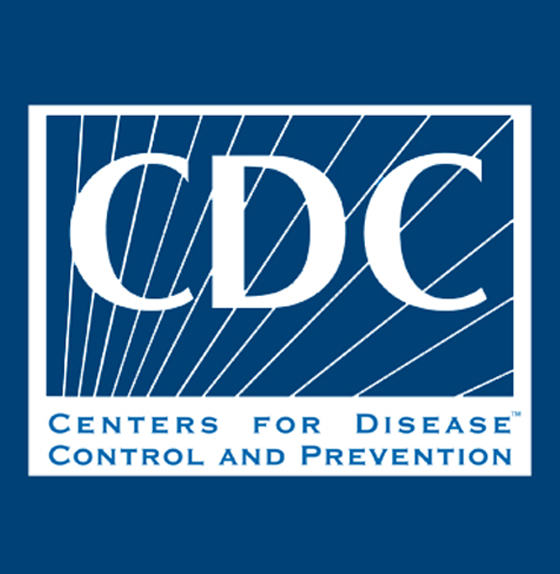 Requirement for Proof of Negative COVID-19 Test for All Airline Passengers Arriving into the United States - January 15, 2021
Requirement for Proof of Negative COVID-19 Test for All Airline Passengers Arriving into the United States - January 15, 2021Effective January 26 - The U.S. Centers for Disease Control and Prevention (CDC) Director has signed an order requiring all airline passengers traveling to the United States, including U.S. citizens and Lawful Permanent Residents (LPRs), to provide proof of a negative COVID-19 viral test or recovery from COVID-19.
 UK Authorities Permitting Production to Continue, Including International Travel - January 11, 2021
UK Authorities Permitting Production to Continue, Including International Travel - January 11, 2021The U.K. is under lockdown and is expected to remain so until at least March. However, film and television productions are exempt provided they work in strict COVID-safe bubbles.
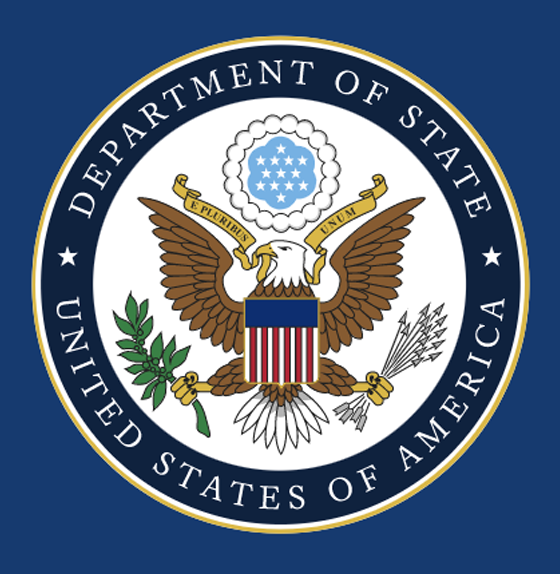 US State Department and CDC Reduced Mexico Travel Advisory Warnings - September 10, 2020
US State Department and CDC Reduced Mexico Travel Advisory Warnings - September 10, 2020The Centers for Disease Control and Prevention (CDC) has reduced its COVID-19 related Travel Health Notice for Mexico. The US State Department has also lowered its travel warning rating as well. As reported earlier, many key touristic and business centers in Mexico have opened and are ready and actively welcoming film productions, business and leisure tourism. Mexico also lifted remaining restrictions in many other areas.
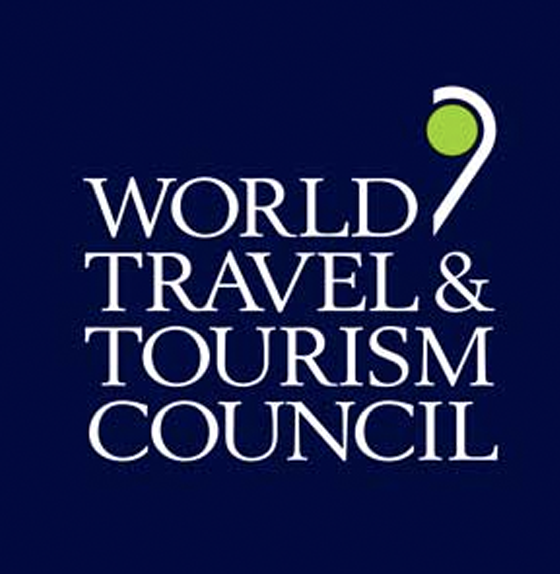 ICC and WTTC Issue COVID-19 Restart Guide for the Travel & Tourism Sector - August 28, 2020
ICC and WTTC Issue COVID-19 Restart Guide for the Travel & Tourism Sector - August 28, 2020The International Chamber of Commerce (ICC) and the World Travel & Tourism Council (WTTC) have published a set of recommendations for safely re-opening customer facing businesses in the age of COVID-19.
 The Producers Guild of America Issues Protocols for the Safe Return to Work - August 28, 2020
The Producers Guild of America Issues Protocols for the Safe Return to Work - August 28, 2020The guidelines stress regular testing, workdays no longer than 10 hours, sanitizing of shared surfaces, proper ventilation and absolutely no visitors on set.
 As Safety Indicators Improve, US State Department Announces Revised Travel Warnings for Baja California Sur, Quintana Roo, and Mexico City - August 6, 2020
As Safety Indicators Improve, US State Department Announces Revised Travel Warnings for Baja California Sur, Quintana Roo, and Mexico City - August 6, 2020The US State Department has lowered the travel warning rating for the states of BCS, Quintana Roo and Mexico City from Level 4 to Level 2 and reiterated that there are no restrictions on travel for U.S government employees to Guadalajara and Riviera Nayarit (including Puerto Vallarta and Punta Mita). As such, those destinations within Mexico are open, ready and actively welcoming film productions, business and leisure tourism.
 Mexico’s Secretary of Culture Film Commission Announces Resumption of Audiovisual Productions - July 12, 2020
Mexico’s Secretary of Culture Film Commission Announces Resumption of Audiovisual Productions - July 12, 2020Effective July 13, 2020, The Secretary of Culture has officially announced that Mexico City is open to film and has released the official guidelines for film production in Mexico, including detailed protocols for field shoots, permitting, use of PPE, and social distancing.
 Mexico Government Releases Official Guide on Preventative Measures for Filming During COVID - July 11, 2020
Mexico Government Releases Official Guide on Preventative Measures for Filming During COVID - July 11, 2020This document provides several useful infographics addressing production safety on and off set, which highlights recommendations for crew transportation and catering, personal hygiene, disinfection and cleaning, and occupancy restrictions for film sets.
 EU Travel Restrictions for US & MX Productions - June 30, 2020
EU Travel Restrictions for US & MX Productions - June 30, 2020As the EU lifts travel restrictions from some countries but continues to ban travel from the US & Mexico, timelines and travel plans for US and Mexican film productions planning to travel to the EU face new uncertainty. Despite individual countries like Hungary working to circumvent this ban by creating industry-specific exceptions for US film productions, these mixed messages about travel safety may create obstacles to resuming work abroad, as well as limit coverage from insurance issuers.
Producers are considering Mexico as a viable “Plan B” for film destinations with the look and feel of Europe, but much closer proximity to the US. Many large isolated securable compounds in Mexico are accessible by jets and helicopters and are ready for fall shoots.
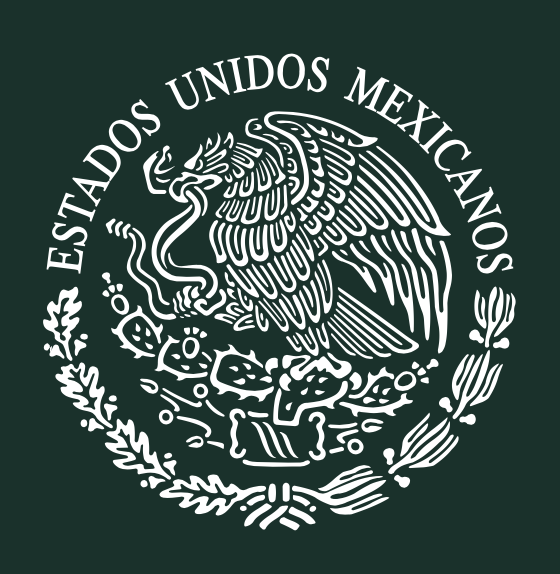 Current COVID-19 statistics and infographics for Mexico - updated daily
Current COVID-19 statistics and infographics for Mexico - updated dailyThis impressive website offers comprehensive information regarding the current number of COVID-19 cases including state-by-state analysis, comorbidity tracking, hospitalization rate, and interactive municipal maps.
“While the numbers in Mexico seem to be following a similar pattern of infections as the rest of the world, it is reassuring to see that the public health authorities are tracking and publishing the data, including comorbidity data which helps place the death rate in better context.”
– Rory Rogers, Director of Operations, The Cabo Agency
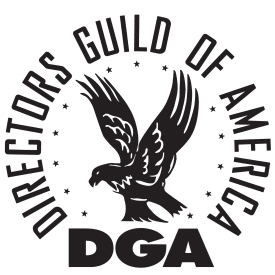 Hollywood’s Unions Release Protocols For Restarting Film & TV Production - June 12, 2020
Hollywood’s Unions Release Protocols For Restarting Film & TV Production - June 12, 2020‘The Safe Way Forward’ Joint Report from the DGA, SAG-AFTRA, IATSE, and Teamsters on COVID-19 Safety Guidelines to Provide Safe Workplaces in a Pre-Vaccine World.
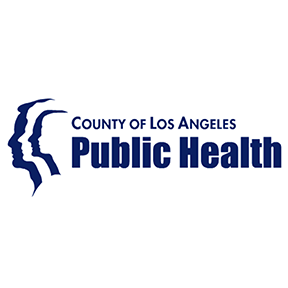 LA County issues protocols for reopening production - June 12, 2020
LA County issues protocols for reopening production - June 12, 2020Los Angeles County Department of Public Health issues checklist with requirements for reopening as early as June 12. Download PDF White Paper of Protocols.
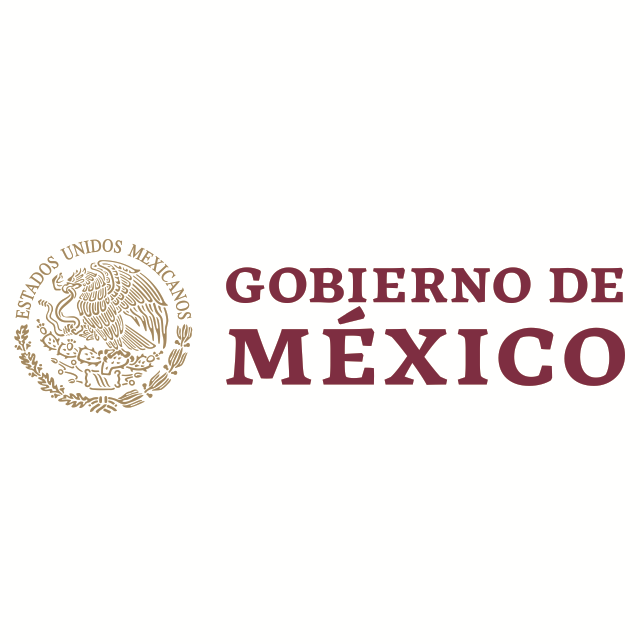 Mexico’s Secretary of Culture release guidelines for audiovisual productions - June 7, 2020
Mexico’s Secretary of Culture release guidelines for audiovisual productions - June 7, 2020The Secretary of Culture’s guidelines are based on recommendations by the Secretary of Health, which include general standards for production. Additional protocols may be released shortly with details for field shoots, which may be added to local, state and touristic guidelines. Download PDF White Paper of Guidelines.
 California Officials Provide Guidance for Music, Film and Television Production - June 5, 2020
California Officials Provide Guidance for Music, Film and Television Production - June 5, 2020“Music, TV and film production may resume in California, recommended no sooner than June 12, 2020 and subject to approval by county public health officers within the jurisdictions of operations following their review of local epidemiological data..."
– California Department of Public Health
 Hollywood Submits COVID-19 Reopening Plan From Studios, Unions & Producers To NY & CA Governors - June 1, 2020
Hollywood Submits COVID-19 Reopening Plan From Studios, Unions & Producers To NY & CA Governors - June 1, 2020“Lots of testing, protective gear, social distancing and coronavirus safety officers are at the heart of recommendations from Disney, Netflix, CBS and other top studios, Hollywood’s leading guilds and producers to get the industry restarted from the pandemic that shut down production in March." Download PDF White Paper of Proposed Guidelines.
- Deadline.com
 PriceWaterhouseCoopers on consumer travel, trust & a different future - May 27, 2020
PriceWaterhouseCoopers on consumer travel, trust & a different future - May 27, 2020"PwC, one of the most trusted sources for non-politicized data gathering and analysis, explains that consumers want to travel again, but they want control of their surroundings. While they may be hard to find without local expertise, Mexico has no shortage of potential film sites that offer controllable environments and are within close proximity to tourism infrastructure and location support."
– André Araiz, Owner & Producer, CINETUR
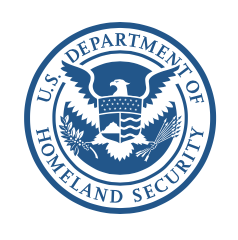 DHS Extends Land Border Closures until June 22 (as of May 19, 2020)
DHS Extends Land Border Closures until June 22 (as of May 19, 2020)"While many media headlines implied that travel to Mexico is prohibited, the temporary closure only applies to non-essential travel across the land ports of entry. Crew air travel and trucking of production equipment into and out of Mexico, for example, remain open for many types of U.S. productions. That said, the current situation in Mexico, like many other regions, remains fluid. Precautionary measures consistent with current best practices should be followed if travel cannot be postponed until more information is available that indicates an acceptable reduction in risk."
– Michael J. Houston, former Consular Agent in Mexico, U.S. Department of State, 1998-2008
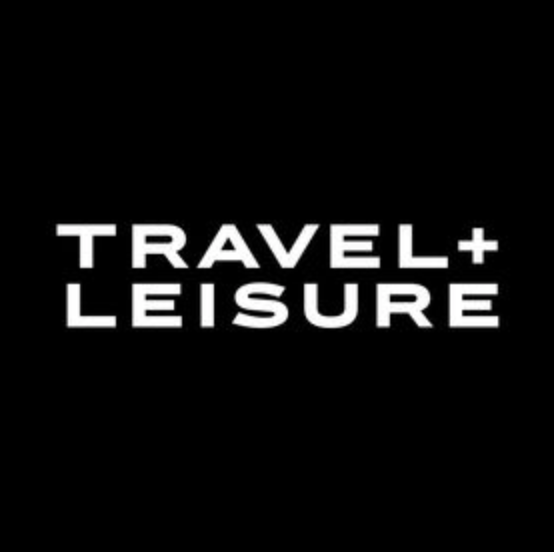 T+L: Americans most interested in travel to Mexico after re-openings
T+L: Americans most interested in travel to Mexico after re-openings"According to an Expedia survey, Mexico holds all top five destinations to which Americans feel comfortable traveling when international travel options return. These survey results may very well reflect the same sentiments of your cast and crew.”
– Jason Hollander, Director, The Cabo Agency
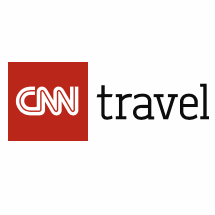 Mexico travel and coronavirus: Everything you need to know - May 26, 2020
Mexico travel and coronavirus: Everything you need to know - May 26, 2020Mexico, one of the top ten countries in the world for tourism according to the World Travel & Tourism Council (WTTC), plans to reopen its doors to travelers starting in June -- albeit not all at the same time.
“The plan for the country is to open in stages and by regions. The target is domestic travelers first, followed by travelers from the US and Canada and then the rest of the world."
– Gloria Guevara, CEO, World Travel & Tourism Council
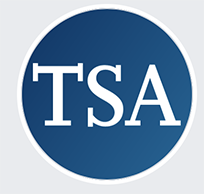 Updated TSA Response to COVID-19 Means Passengers Can Now Travel with More Hand Sanitzer - May 15, 2020
Updated TSA Response to COVID-19 Means Passengers Can Now Travel with More Hand Sanitzer - May 15, 2020TSA is now allowing one liquid hand sanitizer container--up to 12 ounces per passenger and to be screened separately-- in carry-on bags until further notice. Additionally, TSA is consolidating its screening operations to adjust for reduced flight volumes and implementing procedures to increase social distancing and reduce direct contact between TSA officers and the traveling public...
 Plans Moving Forward for Opening State of Jalisco - May 15, 2020
Plans Moving Forward for Opening State of Jalisco - May 15, 2020Jalisco Governor announced that the state will enter Phase 0 of its COVID-19 recovery plan on Monday, May 18, which will last at least 15 days and allow for the gradual return of some economic activities. Beaches, public spaces, shopping malls, bars, and nightclubs will remain closed, as well as hotel swimming pools, bars, gyms, beach clubs, and private beaches...
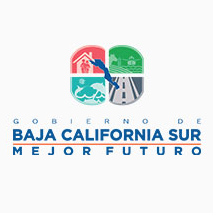 Real-time Updates of COVID-19 Cases in Baja California Sur - May 15, 2020
Real-time Updates of COVID-19 Cases in Baja California Sur - May 15, 2020The state authorities of Baja California Sur have created a comprehensive website that provides up-to-the-minute data on COVID-19 cases in BCS, as well as helpful information on the symptoms of COVID-19 and recommended preventative measures.
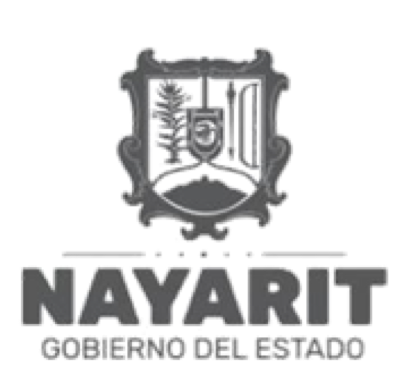 State of Nayarit highlights current health and prevention measures being implemented - May 15, 2020
State of Nayarit highlights current health and prevention measures being implemented - May 15, 2020The state authorities of Nayarit, along with the Banderas Bay Hotel and Motel Association (AHMBB), are requiring that the hotel and restaurant sectors in their region adhere to social distancing and enhanced personal hygiene guidelines as well as adopt increased sanitation protocols...
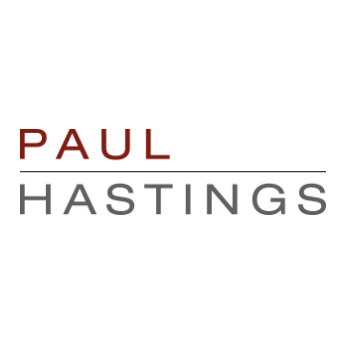 Guidelines for Workplace Testing - May 15, 2020
Guidelines for Workplace Testing - May 15, 2020“The UK government appears to be leading the pack in developing policies and best practices for workplace testing, which will likely be a key factor for the safe return of productions. It is my hope their work will expedite new standards for US productions returning to work in Mexico. Thank you to Paul Hastings for posting informative analysis of the ICO’s guidance.”
– Jason Hollander, Director, The Cabo Agency
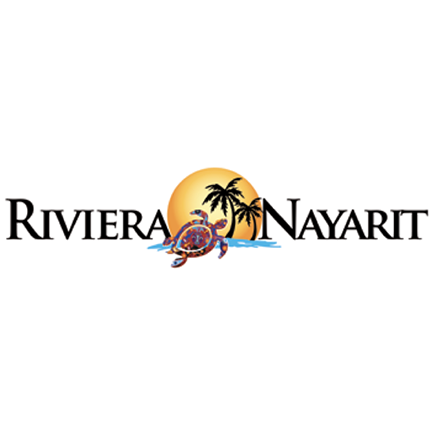 Riviera Nayarit Announces New Entry Procedures for Puerto Vallarta International Airport - May 15, 2020
Riviera Nayarit Announces New Entry Procedures for Puerto Vallarta International Airport - May 15, 2020With heightened control and prevention measures being put into place, both domestic and international travelers arriving into Puerto Vallarta should anticipate assessments upon deplaning which will include temperature screenings and entry interviews; persons exhibiting symptoms for COVID-19 will be detained for an epidemiological evaluation on site...
 European Film Commission Network posts production guidelines - May 14, 2020
European Film Commission Network posts production guidelines - May 14, 2020The European Film Commissions Network created this resource to identify the technical and organizational measures needed in order to help productions restart in safety within Europe during the global emergency; there are links to eight country-specific sets of recommended safety protocols made available to all professionals shooting in Europe in the near future.
"And according an Expedia survey, Mexico holds all top five destinations to which Americans feel comfortable traveling when international travel options return. Such survey results likely reflect a similar sentiment of crews and talent.”
- Jason Hollander, Director, The Cabo Agency
 Mexico’s Secretary of Health and Tourism outlines new COVID-19 protocols for Hospitality Industry - May 14, 2020
Mexico’s Secretary of Health and Tourism outlines new COVID-19 protocols for Hospitality Industry - May 14, 2020Updated sanitation measures for all hoteliers and restaurants for Phase 3 were announced by the Mexican federal government’s Ministry of Health. Limitations on occupancy within resorts and dining venues with the purpose of facilitating social distancing is just one of many precautions being implemented immediately...
 AHLA announces health and best practices for the hotel industry: SAFE STAY
AHLA announces health and best practices for the hotel industry: SAFE STAYThe American Hotel and Lodging Association, in coalition with an expansive advisory council,
created the Safe Stay initiative which focuses on enhanced hotel cleaning practices, social interactions, and workplace protocols to change hotel industry norms, behaviors and standards to ensure both hotel guests and employees are confident in the cleanliness and safety of hotels once travel resumes.
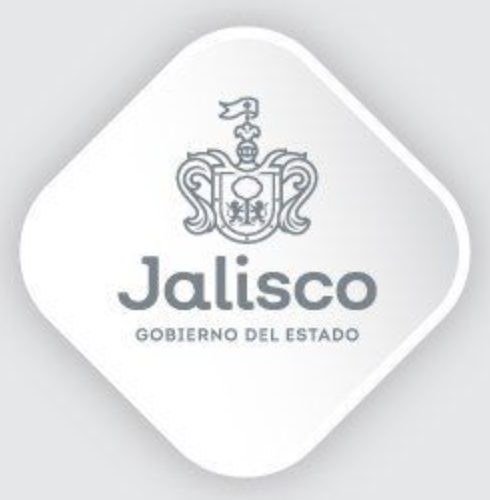 State of Jalisco’s COVID-19 reactivation plan - May 14, 2020
State of Jalisco’s COVID-19 reactivation plan - May 14, 2020Up-to-date information on COVID-19 cases, health, safety precautions and emerging strategies for reactivating the economy of Jalisco once restrictions are lifted.
“Jalisco is one of the most popular destinations for US leisure tourism --their methodical approach to business closures as well as their detailed plan for reopening seems to be reflected in their successful containment statistics at this time.”
– Shelley Murphy, Guest Experiences, The Cabo Agency
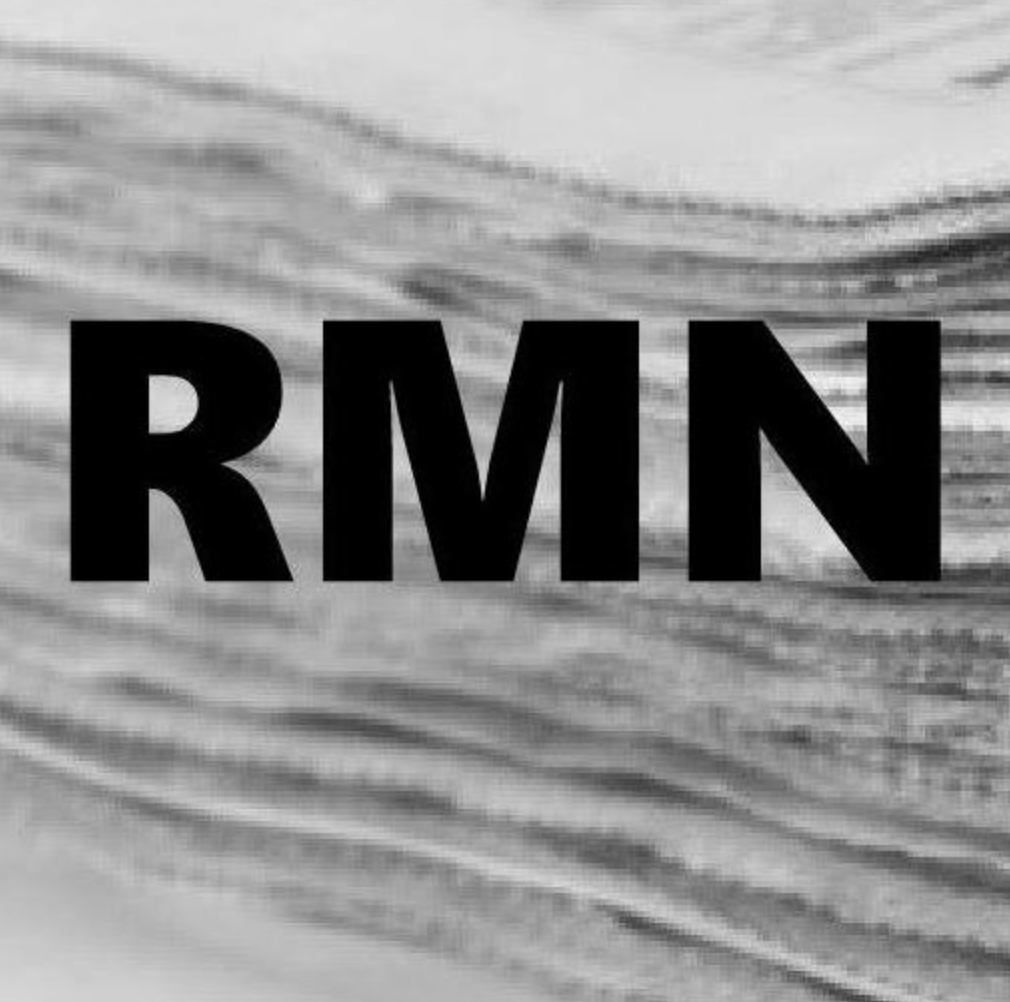 Quintana Roo Tourism Council opening up Riviera Maya - May 13, 2020
Quintana Roo Tourism Council opening up Riviera Maya - May 13, 2020Several airlines have announced they are resuming their operations at the Cancun International Airport beginning in early June. The announcement of the arrival of flights has also promoted the opening of some online reservation systems for area hotels...
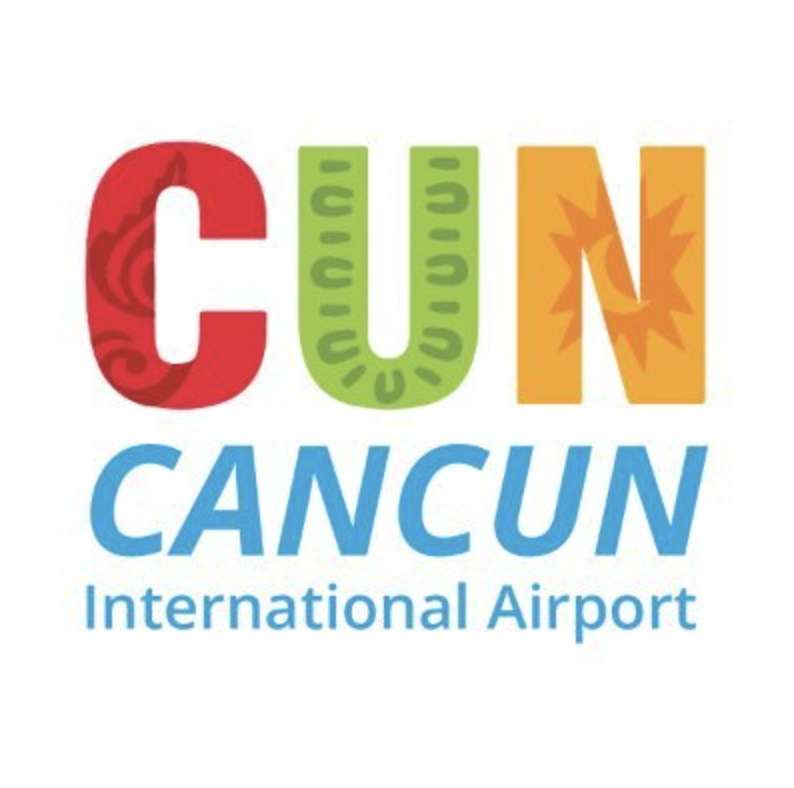 Cancun International Airport Implements COVID-19 Safety Measures - May 13, 2020
Cancun International Airport Implements COVID-19 Safety Measures - May 13, 2020Cancun International Airport is operating normally. Thermal scanners have been installed, and arriving passengers can expect health screenings as well as entry interviews regarding recent travel outside of Mexico. Travelers who exhibit symptoms of having COVID-19 will be sent to the International Health Office inside the airport for medical attention...
 Baja California Sur creates PUNTO LIMPIO Sanitation Certification Program for Tourism Sector - May 13, 2020
Baja California Sur creates PUNTO LIMPIO Sanitation Certification Program for Tourism Sector - May 13, 2020The Ministry of Tourism, Economy and Sustainability in BCS has designed the “Emerging Tourism Business Certification Program” to encourage restaurants and bars, hotels and motels, coffee shops, travel agencies, ground transportation rental companies, dive operators, leisure and entertainment centers to adopt stringent hygiene and sanitation practices in order to obtain “Clean Point” certification...
 Mexico Secretary of Health provides reopening plan - May 12, 2020
Mexico Secretary of Health provides reopening plan - May 12, 2020This comprehensive document offers multiple infographics which depict the existing numbers of COVID-19 cases as of May 12, 2020 as well as the “traffic light” system using the colors red, yellow, and green to indicate the alert level and trending for each state and municipality within Mexico.
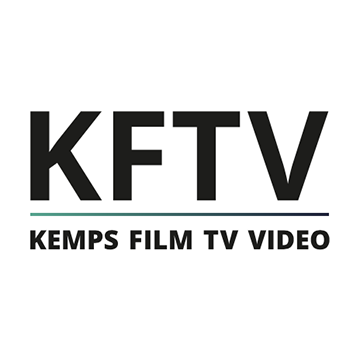 UK Government Confirms Film & TV Production Can Restart - May 12, 2020
UK Government Confirms Film & TV Production Can Restart - May 12, 2020“The [UK] government is working closely with the screen sector to understand how different types of productions can comply with social distancing guidelines, and give confidence to people in the TV and film industries that there are safe ways in which they can return to work,” a DCMS spokesperson told Screen [ScreenDaily]
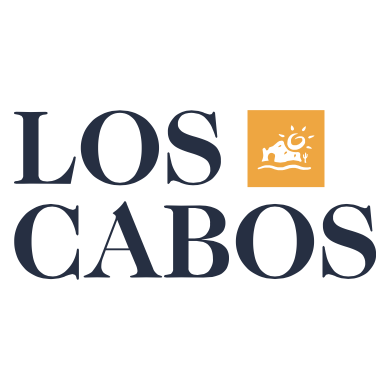 Los Cabos hotel reopening schedule - May 8, 2020
Los Cabos hotel reopening schedule - May 8, 2020Over 80 hotels and resorts in Los Cabos have confirmed reopening dates, with some properties welcoming guests as early as the end of May and a handful waiting until November 2020. As of the date of posting approximately 80% of the destination’s properties expect to be open by August, 2020.
 US Embassy Health Alert Discourages Travel to Mexico - May 8, 2020
US Embassy Health Alert Discourages Travel to Mexico - May 8, 2020The number of confirmed and suspected cases is increasing daily in Mexico and Mexican health authorities have reiterated calls for travelers to stay home during this time. The Mexican government has extended nationwide restrictions on non-essential economic activities in most municipalities until May 30...
 TSA Implements Additional COVID-19 Safety Measures at US Airports - May 7, 2020
TSA Implements Additional COVID-19 Safety Measures at US Airports - May 7, 2020TSA employees are now required to wear masks while working at screening checkpoints, whereas passengers are strongly encouraged to wear facial protection. Travelers may be asked to momentarily lower their facial covering for identity verification purposes, or if screening equipment alarms on it...
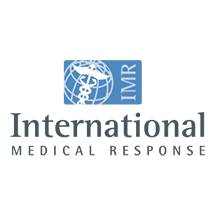 International Medical Response Stands Ready with Rapid-response Teams and Ventilators - May 2020
International Medical Response Stands Ready with Rapid-response Teams and Ventilators - May 2020"IMR’s national network of air and ground ambulances, advanced and critical life support, including ventilators, stands ready to provide priority service to support The Cabo Agency’s international and domestic production clients in Mexico."
- David Alvarez, Coordinador de Operaciones, IMR
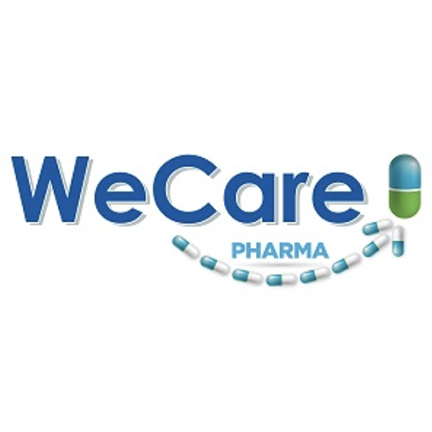 Mexico’s ‘We Care Pharma’ Launches Nationwide Delivery of Prescription and COVID-related Supplies - May 2020
Mexico’s ‘We Care Pharma’ Launches Nationwide Delivery of Prescription and COVID-related Supplies - May 2020"We are now permitted to proactively and compliantly deliver medical supplies and prescriptions to production sets, with requisite prescriptions, of course. This opens up a new layer of reliable medical safety that previously didn’t exist in Mexico."
- Paulino Davó, Co-Owner, Happy Pharma SA de CV
 Mexico’s Largest Fleet of Private Helicopters & Jets Fully Operational and CDC-Compliant - May 2020
Mexico’s Largest Fleet of Private Helicopters & Jets Fully Operational and CDC-Compliant - May 2020"As Mexico’s largest helicopter and certified air taxi operator for both passengers and cargo — with over 560,000 hours of experience— our fleet of aircraft, including jets with full-time US-trained pilots, is ready to fly talent, crew and gear into and out of Mexico at a moment’s notice.”
- Arturo Ordorica, Commercial Director, Grupo Lomex
 Los Cabos Launches Summary of Health & Safety Policies for Hotels and What to Expect When Travel Restrictions are Lifted...
Los Cabos Launches Summary of Health & Safety Policies for Hotels and What to Expect When Travel Restrictions are Lifted...While travelers are currently encouraged to postpone their upcoming trips to Los Cabo to avoid the spread of the virus across the state, the Los Cabos Tourism Board has released a transformative five-phase reopening plan centered on consistent strict standards that facilitate a safer travel environment for tourists’ return to sunny Baja...
 Hyatt Hotels Corporation introduces Global Care and Cleanliness Commitment - April 29, 2020
Hyatt Hotels Corporation introduces Global Care and Cleanliness Commitment - April 29, 2020In addition to enhanced sanitation measures, Hyatt Hotels Corporation is taking their commitment to guest health and safety to the next level by creating a new administrative position at each hotel: each property will have a designated Hygiene Manager, who will be responsible for overseeing operational guidance and protocols to minimize risk of infection...
 Hilton announces collaboration with Mayo Clinic & Lysol - April 27, 2020
Hilton announces collaboration with Mayo Clinic & Lysol - April 27, 2020The Hilton CleanStay with Lysol Protection program has been developed with experts from RB, maker of Lysol and Dettol, brands trusted for safely disinfecting surfaces. In addition, experts from the Infection Prevention and Control team at Mayo Clinic will advise and assist in enhancing Hilton’s cleaning disinfection protocols...
“Hilton CleanStay builds on the best practices and protocols we’ve developed over the last several months, allowing our guests to rest easy with us and focus on enjoying the unforgettable experiences we have to offer – while protecting our Team Members who are on the front lines of hospitality.”
- Christopher J. Nassetta, Hilton President and CEO
 Updated Preventative Actions Taken in Los Cabos to Avoid the Spread of COVID-19 - April 20, 2020
Updated Preventative Actions Taken in Los Cabos to Avoid the Spread of COVID-19 - April 20, 2020In accordance with federal guidelines, the closure of all hotels, resorts and non-essential businesses and the temporary suspension of all social and recreational events will be in effect statewide until May 30th unless new dates are determined. Local community and visitors are asked to use masks, sanitizing gel and wash their hands more frequently while also avoiding crowded spaces...
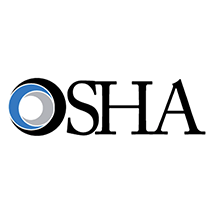 OSHA releases COVID-19 Workplace Guidelines including International Travel
OSHA releases COVID-19 Workplace Guidelines including International Travel“This document mainly refers to CDC and State Department resources for matters related to international travel. However, it does contain valuable guidance regarding definition of risk levels, mitigation, PPE, and the potential effects on the workplace."
– Brett Thackston, Corporate Security Advisor, The Cabo Agency




